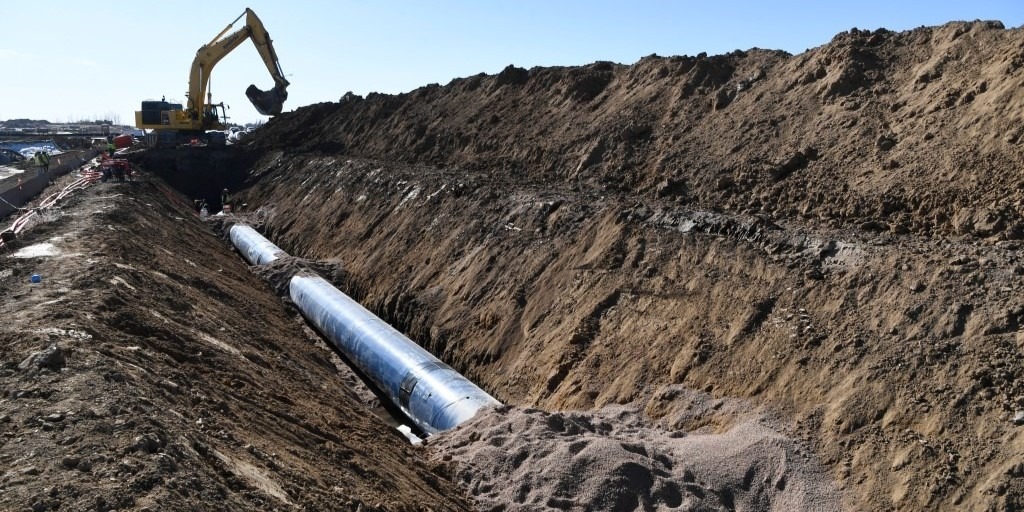Even small cracks or accidents can trigger a destructive explosion.
Predicting Ruptures on Operating Pipeline
- 651 Dauntless Pkwy, Elmont, NY 11003
- propsystems25@yahoo.com
- (877) 710-7926

Danger lurks underground from aging gas pipes
About every other day the past decade, a gas leak in the United States has destroyed property, hurt someone or killed someone, a USA TODAY Network investigation finds. The most destructive blasts have killed at least 135 people, injured 600 and caused $2 billion in damages since 2004.
The death toll includes:
- The explosion that leveled part of a New York City block in East Harlem in March, killing eight and injuring 48 more.
- A blast that flattened the concrete floors of an apartment building in Birmingham, Ala., killing one woman in December.
- A flash fireball in 2012 that left an Austin man dead, a scarred foundation where his house once stood and debris strewn across yards of his neighbors.
Check out the rest of the story on USATODAY.com: Look out below: Danger lurks underground from aging gas pipes
Over the course of the last 10 years, an inescapable and frequently ignored danger has quietly unleashed ruin across the US: gas spills. An exhaustive examination directed by the USA TODAY Organization has uncovered an upsetting example – practically every other day, these imperceptible risks have brought about the obliteration of property, wounds, and sad death toll. This insightful report dives into the disturbing recurrence, destroying outcomes, and the earnest requirement for fundamental changes to address and moderate the continuous dangers presented by gas spills.
The Frightening Measurements
The USA TODAY Organization’s examination uncovered disrupting measurements that highlight the seriousness of the issue. Beginning around 2004, gas spills have caused a stunning cost: no less than 135 lives lost, 600 people harmed, and a stunning $2 billion in punitive fees. These episodes are not disengaged, one-off events; rather, they structure a troubling example of repeating misfortunes that request prompt consideration.
10 years of Annihilation
Inspecting the timetable throughout the last ten years uncovers an upsetting pattern of obliteration brought about by gas spills. The most damaging impacts have left networks broke, families destroyed, and people wrestling with the outcome of these quiet fiascos. Through a nitty gritty investigation of explicit occurrences, we intend to reveal insight into the human expense of this continuous danger.
The Human Cost
Behind the measurements are the accounts of people whose lives have been permanently changed by gas spills. From lethal blasts that killed clueless casualties to occurrences bringing about life changing wounds, the human cost is endless. This segment of the examination will share the individual stories of those impacted, giving a piercing viewpoint on the sweeping effect of gas spills.
Causes and Contributing Variables
Understanding the underlying drivers and contributing variables behind gas spills is pivotal in contriving powerful preventive measures. This part investigates the different explanations for these episodes, including obsolete framework, careless guidelines, and human mistake. By distinguishing the fundamental issues at play, we can start to form designated answers for control the recurrence and seriousness of gas spills.
Administrative Holes and Oversight Difficulties
A top to bottom assessment of the administrative scene uncovers critical holes and difficulties in directing gas framework. Whether because of deficient authorization, obsolete principles, or lacking punishments for rebelliousness, the administrative structure has battled to stay up with the developing dangers related with gas circulation. This segment explores the deficiencies in administrative oversight and proposes suggestions for development.
Industry Practices and Responsibility
The gas business assumes a significant part in guaranteeing the wellbeing of gas conveyance organizations. In any case, the examination has revealed occasions of unacceptable practices, absence of responsibility, and a requirement for expanded straightforwardness inside the business. By examining industry rehearses, we expect to recognize regions where upgrades can be made to improve the general security of gas framework.
Crisis Reaction and Local area Readiness
At the point when gas releases happen, quick and successful crisis reaction measures are fundamental to limiting the effect on networks. This segment assesses the present status of crisis reaction conventions and local area readiness, featuring regions where enhancements are expected to guarantee a planned and convenient reaction to gas-related episodes.
Mechanical Advancements and Observing Arrangements
Headways in innovation present chances to alter gas spill identification and counteraction. This part investigates state of the art innovations, like high level sensors, man-made brainpower, and information examination, that can possibly improve the observing of gas foundation. By embracing these developments, we can proactively address gas spills and fundamentally diminish the related dangers.
The Way ahead: Proposals for Change
Considering the discoveries from the examination, this part frames a far reaching set of proposals pointed toward tending to the multi-layered difficulties presented by gas spills. From administrative changes and industry responsibility to local area commitment and mechanical reception, these suggestions structure a guide for making a more secure and stronger gas dissemination network in the US.
Conclusion
The USA TODAY Organization’s ten years crossing examination concerning gas spills in the US has revealed a profoundly disturbing and determined danger that requests earnest consideration. By revealing insight into the human cost, exploring the main drivers, and proposing unmistakable arrangements, this report fills in as a source of inspiration for partners at each level – from policymakers and industry pioneers to nearby networks – to team up in protecting against the overwhelming outcomes of gas spills. It is our expectation that this far reaching assessment starts a reestablished obligation to focusing on wellbeing, carrying out changes, and eventually forestalling future misfortunes related with gas spills.
